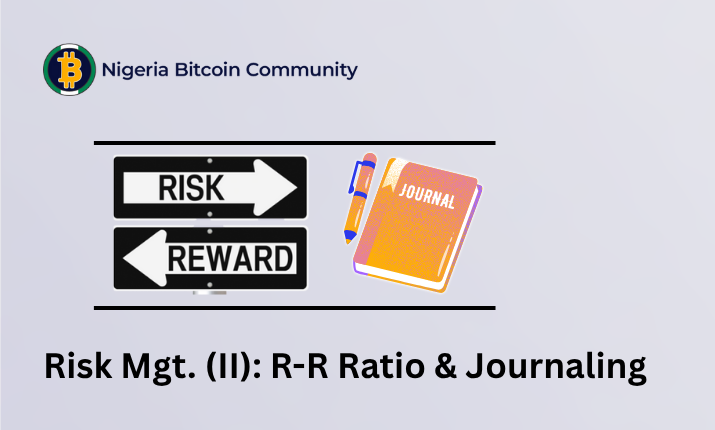In this second part of our risk management series, I’ll break down:
- How to calculate your risk-reward ratio
- Size your positions correctly, and
- The often overlooked secret to trading growth: Journaling.
In the world of trading, consistent growth isn’t just about finding the best strategy — it’s about managing your risk and building systems that keep you disciplined.
Whether you trade Forex or crypto, mastering this combo can take you from emotional guessing to strategic execution.
Let’s get to the business of the day.
Calculating Risk-Reward & Position Size (With Examples)
Let’s walk through two practical examples to show how traders can properly size their positions and manage risk using tools like TradingView and FxCryptoCalculator.
Forex Example – AUD/JPY
- Entry: 94.362
- Stop loss: 94.528
- Take profit: 93.936
- Risk/Reward: 2.57R
- Account size: $1,000
- Risk %: 3% → $30
Using the calculator, input:
- Stop loss in pips
- Account size
- Risk percentage
- Instrument type: Forex
Position size (lot size) = 0.26
- If trade fails → Loss: $30
- If trade succeeds → Profit: $30 × 2.57 = $77.10
Crypto Example – BTC/USDT
- Entry: 109,734.3
- Stop loss: 110,166.6
- Risk/Reward: 2.37R
- Risk amount: $30
Input these into the calculator:
Position size = 8,613 USDT
On Bybit, do the following:
- Use 100x leverage
- Choose Order by Value
- Set position size, stop loss, and take profit
- Loss = $30
- Profit = $71.10
Simple. Controlled. Repeatable.
What if you’re using “Order by Cost” or Trading on Blofin?
For platforms like Blofin:
- Use maximum leverage
- Calculator will return a trade cost (e.g., $57.40)
- Set your trade size, SL, and TP
Your maximum loss remains $30, with profits dependent on your risk-reward ratio.
Now, we will look at the power of compounding and how best to compound.
The Power of Compounding
In crypto or forex trading, compounding means reinvesting your profits to grow your trading account over time.
Instead of withdrawing your profits after each winning trade or at the end of the week/month, you add them back to your account balance.
This increases the amount you can risk in future trades (if you’re using a percentage-based risk strategy), which leads to faster account growth — assuming you remain profitable and disciplined.
Example of Compounding in Trading:
Let’s say you start with $1,000 and risk 2% per trade.
- First trade: Risk = $20
- You win and earn $40 (2:1 risk-reward)
- New balance = $1,040
Now, your next 2% risk = $20.80 instead of $20.
Over time, that slight increase adds up significantly, especially with consistent wins.
Why Compounding Matters:
- Faster account growth
- Encourages discipline
- Helps you see long-term potential
- Builds confidence when tracked properly
But, there’s a caveat:
Compounding amplifies both gains and losses.
Without a solid strategy and risk management, it can blow up accounts faster.
So, use it wisely.
If you want to grow steadily, start with monthly compounding, then shift to weekly once you’re consistent.
Here’s how:
- Add monthly profits to your balance
- Recalculate your new risk amount
- Repeat
For example:
- Start: $1,000
- Monthly Growth: 20%
| Year | Projected Balance |
|---|---|
| 1 | $8,916 |
| 2 | $79,497 |
| 3 | $708,802 |
Use a compound calculator spreadsheet to track this.
And what if your risk-reward improves to 1:3?
By Year 3: Over $12 million is possible — with discipline.
In the next subheading, we will look at a secret accountability tool that most traders fail to implement.
Trade Journal: The Secret Weapon Most Ignore
This is where most traders fail, even when they have the right tools.
Why?
Because they skip the most powerful habit for accountability and growth: Journaling.
It is the process of recording and reviewing your trades, including not just the numbers, but also your thoughts, emotions, and decisions behind each trade.
Journaling matters in trading because of the following:
1. Tracks Your Progress
It shows your:
- Win/loss ratio
- Profit/loss over time
- Mistakes and improvements
Without a journal, you’re flying blind.
2. Reveals Patterns
You begin to notice:
- What setups work best
- Which times/days are most profitable
- Your bad habits (e.g., overtrading, revenge trading)
3. Improves Emotional Control
Writing down your thoughts before and after a trade helps you:
- Stay calm and objective
- Understand your trading psychology
- Avoid impulsive decisions
4. Builds Accountability
When you journal, you hold yourself responsible for every trade.
No more blaming the market — only lessons learned.
5. Boosts Your Strategy
Over time, journaling helps refine your trading system:
- Which indicators actually help?
- Do certain news events throw you off?
- Are you consistent with your entries/exits?
What to include in a Trading Journal
| Aspect | What to Record |
|---|---|
| Trade details | Entry, Stop Loss, Take Profit, Pair/Token |
| Position size | How much did you risk? |
| Risk-reward | Your R:R ratio |
| Outcome | Win/loss, profit/loss amount |
| Screenshots | Before and after charts |
| Notes | Why you took the trade, what you felt, what you learned |
That said, let’s round up this post in the next subheading.
Final Thoughts
Risk management is more than setting a stop loss.
It’s about calculating smart positions, compounding wisely, and tracking your progress through journaling.
If you want long-term success, start here.
Keep it simple, stay consistent, and never stop learning from your trades.
You can join our mentorship session to learn more.
Our communities on Telegram (crypto & forex) and Discord are available for coin calls and trade signals.
Got questions or need help with any of the tools mentioned?
Drop them in the comments box. Let’s grow together.
Share this post on your timeline — a friend might need it too!



0 Comments